 W
WOtake Chikuha was a Japanese painter. He was first known for his nihonga and ukiyo-e paintings. Although he was a praised figure at the height of his career, he later lost his reputation. He moved onto experimenting with more ambitious styles motivated by his anti-mainstream sentiments.
 W
WFujishima Takeji was a Japanese painter, noted for his work in developing Romanticism and impressionism within the yōga (Western-style) art movement in late 19th- and early 20th-century Japanese painting. In his later years, he was influenced by the Art Nouveau movement.
 W
WGoseda Yoshimatsu was a Japanese painter mainly active in the Meiji era (1868–1912).
 W
WHashimoto Gahō was a Japanese painter, one of the last to paint in the style of the Kanō school.
 W
WHirose Kinzō (弘瀬金蔵) (1812–1876), also known as Ekin (絵金), was a Japanese painter of the late-Edo, Bakumatsu, and early-Meiji periods.
 W
WIkeda Koson was a Japanese painter.
 W
WIshibashi Kazunori was a Japanese painter active in both yōga and nihonga. His name can also be read Ishibashi Wakun and he used the art name Gyūgagen.
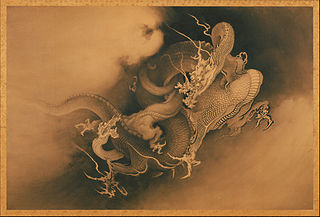 W
WKanō Hōgai was a Meiji era (19th-century) Japanese artist of the Kanō school. As one of the last Kanō artists, he helped pioneer the nihonga art style with Hashimoto Gahō and art critic Ernest Fenollosa. Hōgai's work reflected the traditional style of the school whilst still showing experimentation and influence with Western methods. Hōgai is perhaps best known for his paintings of dragons, birds, and Buddhist gods such as Kannon.
 W
WKatsushika Ōi, also known as Ei (栄), was a Japanese Ukiyo-e artist of the early 19th century Edo period. Her mother was the second wife of Hokusai. Ōi was an accomplished painter who also worked as a production assistant to her father.
 W
WKawahara Keiga was a late Edo period Japanese painter of plants, fishes, birds, reptiles, crustaceans, social scenes, landscapes and portraits at the Dutch Factory of Dejima, and at Edo, Kyoto and Nagasaki. His works can be found in museums in Japan and in the Netherlands, among others.
 W
WKawamura Kiyoo (川村清雄) (1852–1934) was a yōga artist in Meiji to Shōwa Japan.
 W
WKawanabe Kyōsai was a Japanese artist, in the words of a critic, "an individualist and an independent, perhaps the last virtuoso in traditional Japanese painting".
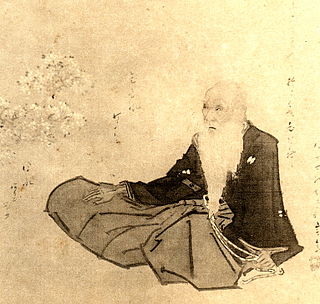 W
WKikuchi Yōsai , also known as Kikuchi Takeyasu and Kawahara Ryōhei, was a Japanese painter most famous for his monochrome portraits of historical figures.
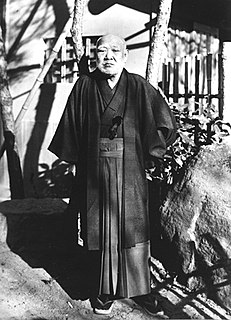 W
WKimura Buzan (木村武山) was a Japanese Nihonga painter associated with the Nihon Bijutsuin.
 W
WKobayashi Eitaku was a Japanese artist and illustrator specializing in ukiyo-e and nihonga.
 W
WKobayashi Kiyochika was a Japanese ukiyo-e artist, best known for his colour woodblock prints and newspaper illustrations. His work documents the rapid modernization and Westernization Japanese underwent during the Meiji period (1868–1912) and employs a sense of light and shade called kōsen-ga inspired by Western art techniques. His work first found an audience in the 1870s with prints of red-brick buildings and trains that had proliferated after the Meiji Restoration; his prints of the First Sino-Japanese War of 1894–95 were also popular. Woodblock printing fell out of favour during this period, and many collectors consider Kobayashi's work the last significant example of ukiyo-e.
 W
WKonishi Hirosada was the most prolific Osaka-based designer of ukiyo-e woodblock prints during the late Edo period. Like most producers of kamigata-e (上方絵)—prints originating in the Osaka and Kyoto regions—he specialized in yakusha-e actor prints. Hirosada is particularly known for his diptychs and triptychs, and for his many ōkubi-e portraits of the leading actors on the Osaka kabuki stage during his day.
 W
WKōno Bairei was a Japanese painter, book illustrator, and art teacher. He was born and lived in Kyoto. He was a member of the Ukiyo-e school and was a master of kacho-e painting in the Meiji period of Japan.
 W
WKubota Beisen was a Japanese artist and art instructor in the Meiji period.
 W
WKume Keiichiro was a Japanese painter in the yōga style. His father was the historian, Kume Kunitake.
 W
WKunisawa Shinkurō (国沢新九郎) (1848–1877) was a pioneer of Western-style painting in early Meiji Japan. Born to a retainer of the Tosa Domain, he studied in England under John Edgar Williams, before opening the Shōgidō (彰技堂) art school in 1874, upon his return to Japan. His students include Honda Kinkichirō (本多錦吉郎), Morizumi Isana (守住勇魚), Araki Kanpo (荒木寛畝) (1831~1915), and Asai Chū.
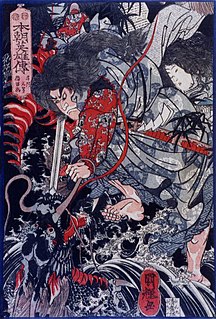 W
WUtagawa Kuniteru was an ukiyo-e artist in the tradition of the Utagawa school. Born in Edo (Tokyo), he studied under both Kunisada and Toyokuni I. He produced prints of a wide variety of subjects, including many depicting the increasing Western influence on Japan, with his main output taking the form of book illustrations and single-sheet ukiyo-e.
 W
WViscount Kuroda Seiki was a Japanese painter and teacher, noted for bringing Western theories about art to a wide Japanese audience. He was among the leaders of the yōga movement in late 19th and early 20th-century Japanese painting. His real name was Kuroda Kiyoteru, which uses an alternate pronunciation of the Chinese characters.
 W
WToshihide Migita , also known as Oju Toshihide or Toshihide was a Japanese artist, creating work in traditional ukiyo-e prints and painting in the Western syle.
 W
WNakahara Nantenbō , also known as Tōjū Zenchū, Tōshū Zenchū 鄧州全忠, and as Nantenbō Tōjū, was a Japanese Zen Master. In his time known as a fiery reformer, he was also a prolific and accomplished artist. He produced many fine examples of Zen Art and helped bridge the gap between older forms of Zen Buddhist art and its continuation in the 20th century.
 W
WOkada Saburōsuke was a Japanese painter in the Yōga style and a Professor at the "Tōkyō Bijutsu Gakkō" ; precursor of the Tokyo University of the Arts.
 W
WOkuhara Seiko Okuhara Seiko was a Literati artist in Japan in the late 1800s. She became a leading artist in Japan founding an art school and displaying her art throughout the country. In 1891, at the age of fifty-five, Seiko decided to retire to a country village. The paintings created by Seiko following her retirement are highly regarded and considered to be some of her finest work.
 W
WRyūsai Shigeharu (柳窗重春/柳斎重春) (1802–1853) was an Osaka-based Japanese ukiyo-e woodblock print artist active during the first half of the nineteenth century. A member of the Utagawa school, he was one of a very select group of kamigata-e print artists who were able to support themselves solely as professional artists.
 W
WUtagawa Sadahide , also known as Gountei Sadahide, was a Japanese artist best known for his prints in the ukiyo-e style as a member of the Utagawa school. His prints covered a wide variety of genres; amongst his best known are his Yokohama-e pictures of foreigners in Yokohama in the 1860s, a period when he was a best-selling artist. He was a member of the Tokugawa shogunate's delegation to the International Exposition of 1867 in Paris.
 W
WSakai Hōitsu was a Japanese painter of the Rinpa school. He is known for having revived the style and popularity of Ogata Kōrin, and for having created a number of reproductions of Kōrin's work.
 W
WKamisaka Sekka was an important artistic figure in early twentieth-century Japan. Born in Kyoto to a Samurai family, his talents for art and design were recognized early. He eventually allied himself with the traditional Rinpa school of art. He is considered the last great proponent of this artistic tradition. Sekka also worked in lacquer and in a variety of other media.
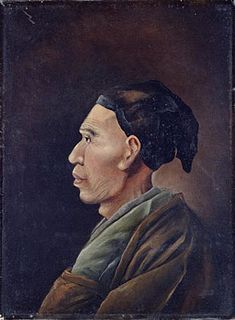 W
WShiba Kōkan , born Andō Kichirō (安藤吉次郎) or Katsusaburō (勝三郎), was a Japanese painter and printmaker of the Edo period, famous both for his Western-style yōga paintings, in imitation of Dutch oil painting styles, methods, and themes, which he painted as Kōkan, and his ukiyo-e prints, which he created under the name Harushige, but also producing forgeries of the works of Suzuki Harunobu. He is said to have boasted of his ability to forge the great master so well. He also was engaged in Western learning (Rangaku) in the field of astronomy.
 W
WShibata Zeshin was a Japanese lacquer, painter and print artist of the late Edo period and early Meiji era. He has been called "Japan's greatest lacquerer", but his reputation as painter and print artist is more complex: In Japan, he is known as both too modern, a panderer to the Westernization movement, and also an overly conservative traditionalist who did nothing to stand out from his contemporaries. Despite holding this complicated reputation in Japan, Zeshin has come to be well regarded and much studied among the art world of the West, in Britain and the United States in particular.
 W
WTakahashi Yuichi was a Japanese painter, noted for his pioneering work in developing the yōga (Western-style) art movement in late 19th-century Japanese painting.
 W
WTakeuchi Seihō was a Japanese painter of the nihonga genre, active from the Meiji through the early Shōwa period. One of the founders of nihonga, his works spanned half a century and he was regarded as master of the prewar Kyoto circle of painters. His real name was Takeuchi Tsunekichi.
 W
WTomioka Tessai was the pseudonym for a painter and calligrapher in imperial Japan. He is regarded as the last major artist in the Bunjinga tradition and one of the first major artists of the Nihonga style. His real name was Yusuke, which he later changed to Hyakuren.
 W
WToyohara Chikanobu , better known to his contemporaries as Yōshū Chikanobu (楊洲周延), was a prolific woodblock artist of Japan's Meiji (era).
 W
WToyohara Kunichika was a ukiyo-e Japanese woodblock print artist. Talented as a child, at about thirteen he became a student of Tokyo's then-leading print maker, Utagawa Kunisada. His deep appreciation and knowledge of kabuki drama led to his production primarily of yakusha-e, which are woodblock prints of kabuki actors and scenes from popular plays of the time.
 W
WKōgyo Tsukioka , sometimes called Kōgyo Sakamaki , was a Japanese artist of the Meiji period. He was a student and adopted son of Tsukioka Yoshitoshi, and also studied with Ogata Gekkō. Although Kōgyo sometimes painted other subjects, for most of his career he made pictures of Japanese noh theatre, either as large-scale paintings or colored woodblock prints. Many of the latter were published in series and sold as multi-volume sets. Some sets, such as Nōgaku zue, have been preserved as albums in their original bindings, including accordion-style bindings known as orihon, while other sets such as Nōga taikan, were issued in sewn bindings known as yamato toji. Although most bound sets belong to institutional collections, individual prints by Kōgyo can still be found through dealers specializing in Japanese prints.
 W
WUtagawa Kunisada II was a Japanese ukiyo-e print designer, one of three to take the name "Utagawa Kunisada". He headed the Utagawa school.
 W
WUtagawa Kunisada III (歌川国貞) (1848–1920) was an ukiyo-e printmaker of the Utagawa school, specializing in yakusha-e. He began studying under Utagawa Kunisada I at the age of 10, and continued under Kunisada II after their master's death.
 W
WUtagawa Yoshiiku , also known as or Ochiai Yoshiiku , was a Japanese artist of the Utagawa school.
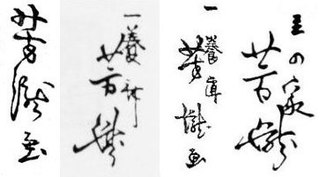 W
WUtagawa Yoshitaki , who is also known as Ichiyōsai Yoshitaki, was a Japanese designer of ukiyo-e woodblock prints who was active in both Edo (Tokyo) and Osaka. He was also a painter and newspaper illustrator. His father was a paste merchant, and Yoshitaki became a student of Utagawa Yoshiume (1819–1879). Yoshitaki was the most prolific designer of woodblock prints in Osaka from the 1860s to the 1880s, producing more than 1,200 different prints, almost all of kabuki actors.
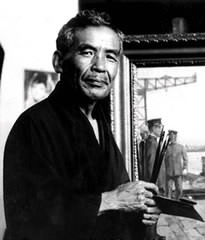 W
WWada Eisaku was a Japanese painter and luminary of the yōga scene in the late Meiji, Taishō, and Shōwa eras. He was a member of the Japan Art Academy, an Imperial Household Artist, a recipient of the Order of the Sacred Treasure and Order of Culture, an Officier in the Légion d'honneur, and a Person of Cultural Merit.
 W
WWatanabe Shōtei aka Watanabe Seitei was a Nihonga painter and one of the first to visit Europe, attending the 1878 International Exhibition in Paris and being awarded a medal. Shōtei blended Western realism with the delicate colours and washes of the Kikuchi Yōsai school, introducing a new approach to kachōga or kacho.
 W
WHosui Yamamoto was a Japanese artist. He is also sometimes known as Yamamoto Tamenosuke.
 W
WYamashita Rin was a painter of icons for the Japanese Orthodox Church. She was one of the first independent Japanese female artists, the first recognized female yōga painter. She studied in Russia, and her work can be found in over forty churches across Japan.
 W
WYokoyama Taikan was the pseudonym of a major figure in pre-World War II Japanese painting. He is notable for helping create the Japanese painting technique of Nihonga. His real name was Sakai Hidemaro.
 W
WTsukioka Yoshitoshi was a Japanese artist.